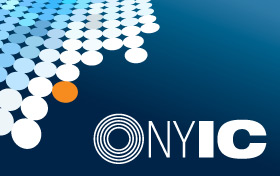Just Released: Auto Loans in High Gear

Total household debt increased modestly, by $32 billion, in the fourth quarter of 2018, according to the latest Quarterly Report on Household Debt and Credit from the New York Fed’s Center for Microeconomic Data. Although household debt balances have been rising since mid-2013, their sluggish growth in the fourth quarter was mainly due to a flattening in the growth of mortgage balances. Auto loans, which have been climbing at a steady clip since 2011, increased by $9 billion, boosted by historically strong levels of newly originated loans. In fact, 2018 marked the highest level in the nineteen-year history of the loan origination data, with $584 billion in new auto loans and leases appearing on credit reports, up in nominal terms from 2017’s $569 billion. In this post, we take a closer look at the composition and performance of outstanding auto loan debt using the New York Fed’s Consumer Credit Panel (CCP), which is based on anonymized Equifax credit data and also the source for the Quarterly Report.
Just Released: Cleaning Up Collections

Household debt balances continued their upward trend in the second quarter, with increases in mortgage, auto, and credit card balances, according to the latest Quarterly Report on Household Debt and Credit from the New York Fed’s Center for Microeconomic Data. Student loans were roughly flat, a typical seasonal pattern in the second quarter. The Quarterly Report contains summaries of the types of information that is covered in credit reports, sourced from the New York Fed Consumer Credit Panel (CCP). The CCP is based on anonymized Equifax credit reports and is the source for the analysis provided in this post, which focuses on an area that until recently has received little attention: collections accounts.
Just Released: New York Fed Press Briefing Highlights Changes in Home Equity and How It’s Used

Andrew Haughwout, Donghoon Lee, Joelle Scally, and Wilbert van der Klaauw At a press briefing this morning, economists at the New York Fed focused on the evolution of housing wealth and its use as collateral. Their comments came in connection with the Center for Microeconomic Data’s release of its Quarterly Report on Household Debt and […]
Just Released: Great Recession’s Impact Lingers in Hardest‑Hit Regions

The New York Fed’s Center for Microeconomic Data today released our Quarterly Report on Household Debt and Credit for the fourth quarter of 2017. Along with this report, we have posted an update of state-level data on balances and delinquencies for 2017. Overall aggregate debt balances increased again, with growth in all types of balances except for home equity lines of credit. In our post on the first quarter of 2017 we reported that overall balances had surpassed their peak set in the third quarter of 2008—the result of a slow but steady climb from several years of sharp deleveraging during the Great Recession.
Did Import Competition Boost Household Debt Demand?

In the years preceding the Great Recession, the United States experienced a dramatic rise in household debt and an unprecedented increase in import competition. In a recent staff report, we outline a link between these two seemingly unrelated phenomena. We argue that the displacement of workers exposed to import competition fueled their demand for mortgage credit, which left many households more vulnerable to the eventual downturn in the housing market.
Whither Mortgages?
Rethinking Mortgage Design
John Campbell, Andreas Fuster, David O. Lucca, Stijn Van Nieuwerburgh, and James Vickery Because mortgages make up the majority of household debt in most developed countries, mortgage design has important implications for macroeconomic policy and household welfare. As one example, most U.S. mortgages have fixed interest rates—if interest rates fall, existing borrowers need to refinance […]
The Survey of Consumer Expectations Turns Two!
The Federal Reserve Bank of New York’s Survey of Consumer Expectations (SCE) turned two years old in June.
Just Released: Press Briefing on Student Loan Borrowing and Repayment Trends, 2015
This morning, Jamie McAndrews, the Director of Research at the Federal Reserve Bank of New York, spoke to the press about the economic recovery, and his speech was followed by a special briefing by New York Fed economists on student loans. Here, we provide a short summary of the student loan briefing.
From Our Archive: Student Debt in Perspective
The Editors We read with interest a new Brookings Institution report, Is a Student Loan Crisis on the Horizon?, assessing the weight of the student debt burden. It was also pleasing to see the New York Times, several of our Twitter followers, and others citing work on this blog in counterpoint.











 RSS Feed
RSS Feed Follow Liberty Street Economics
Follow Liberty Street Economics